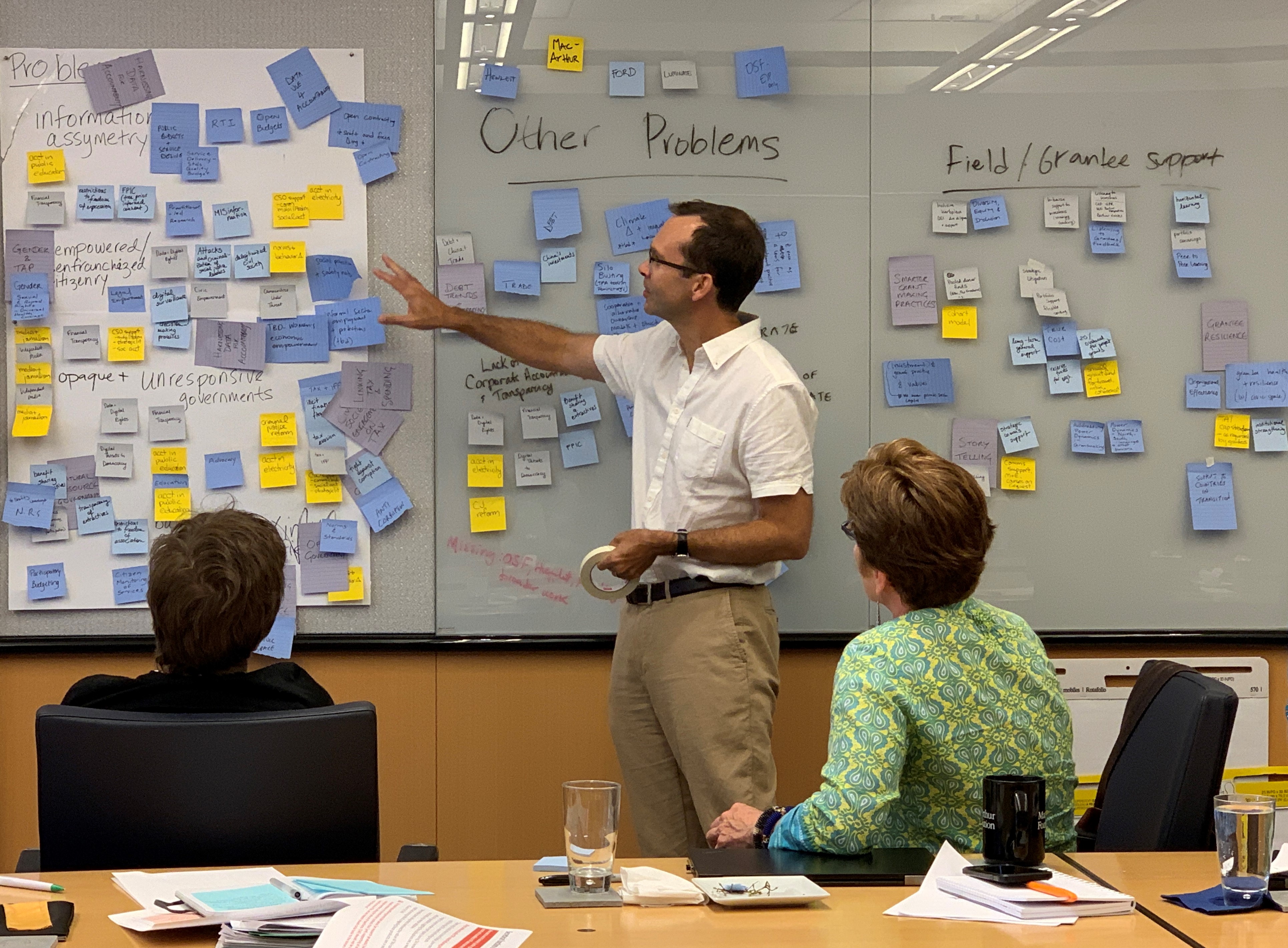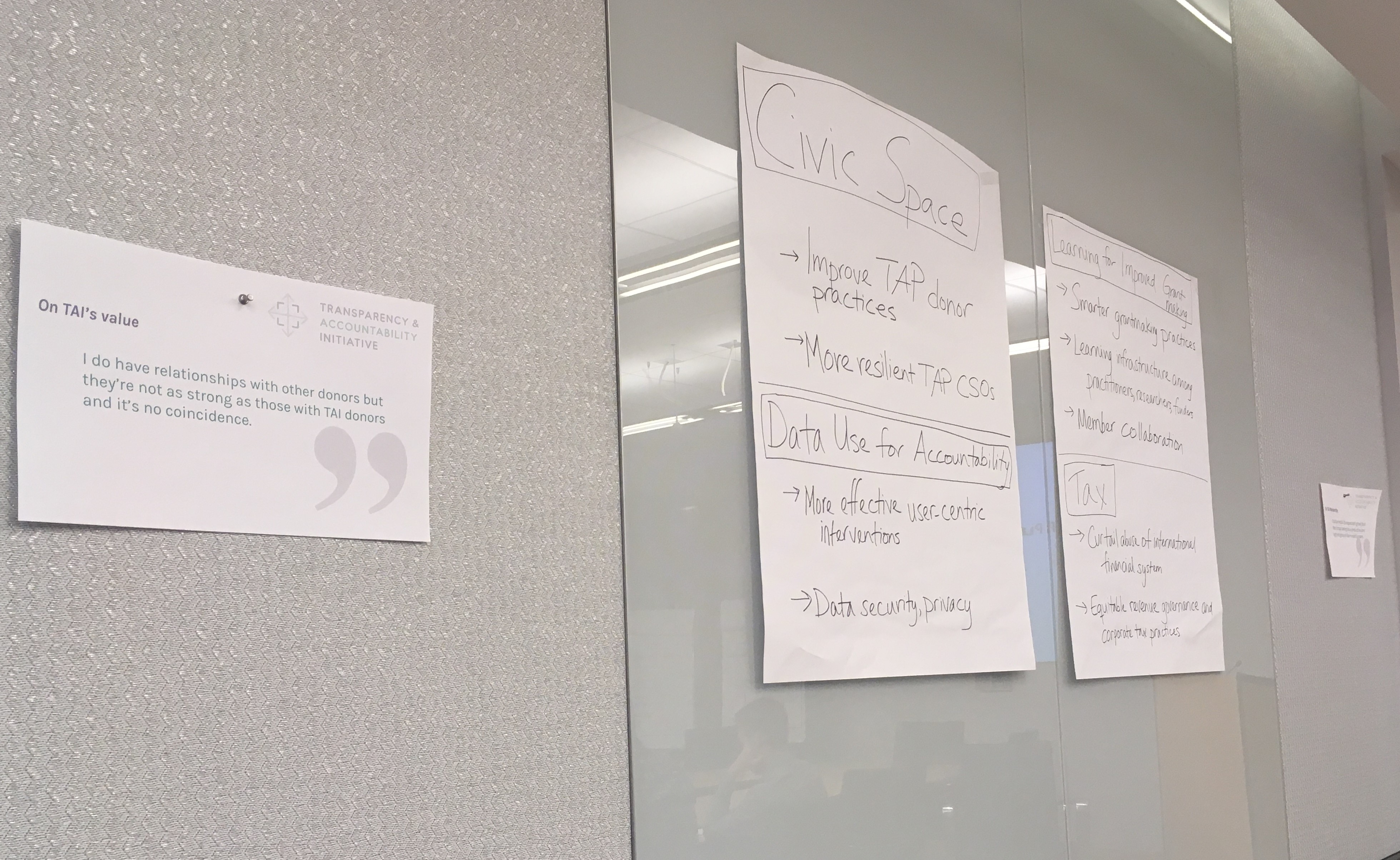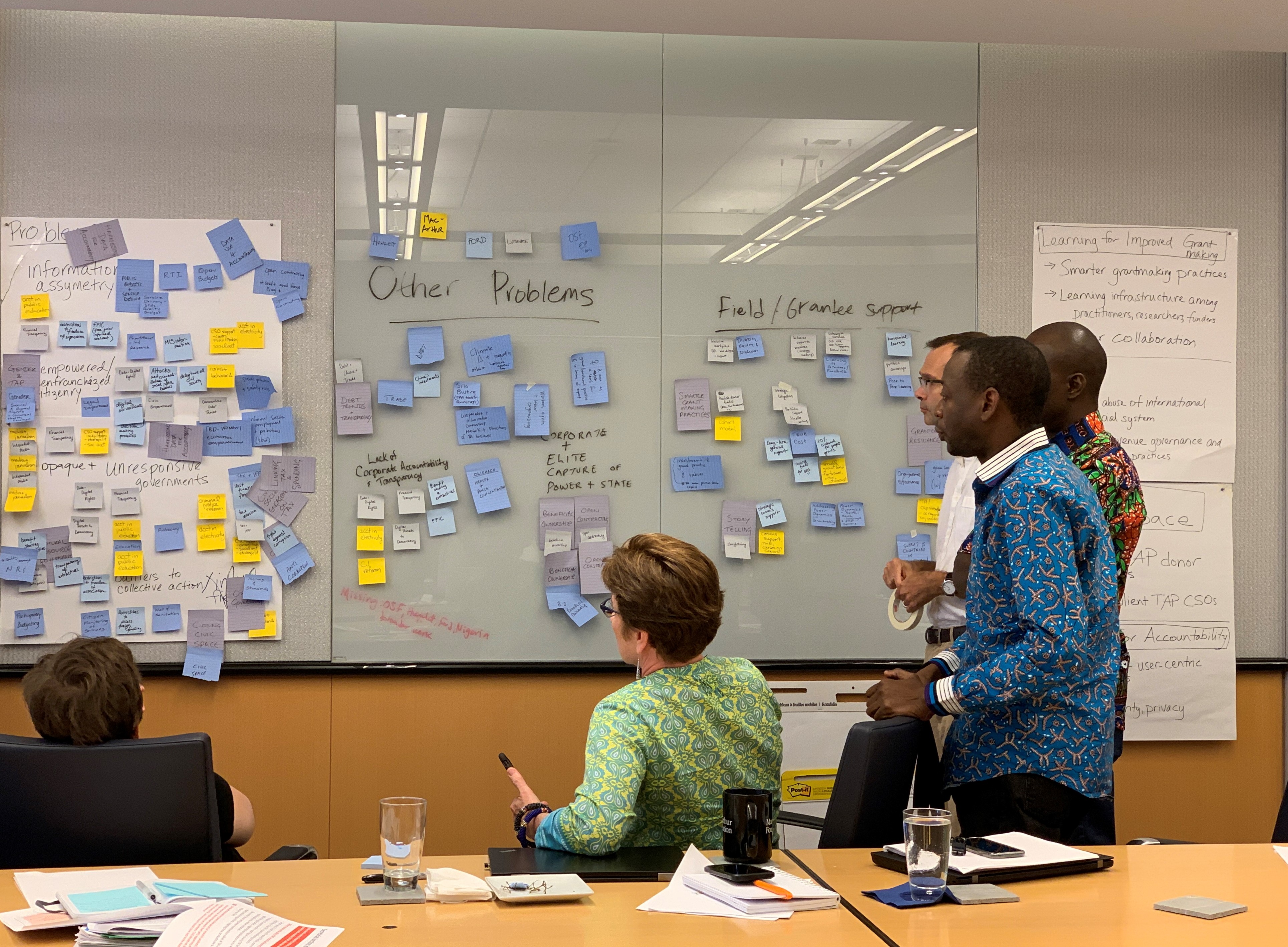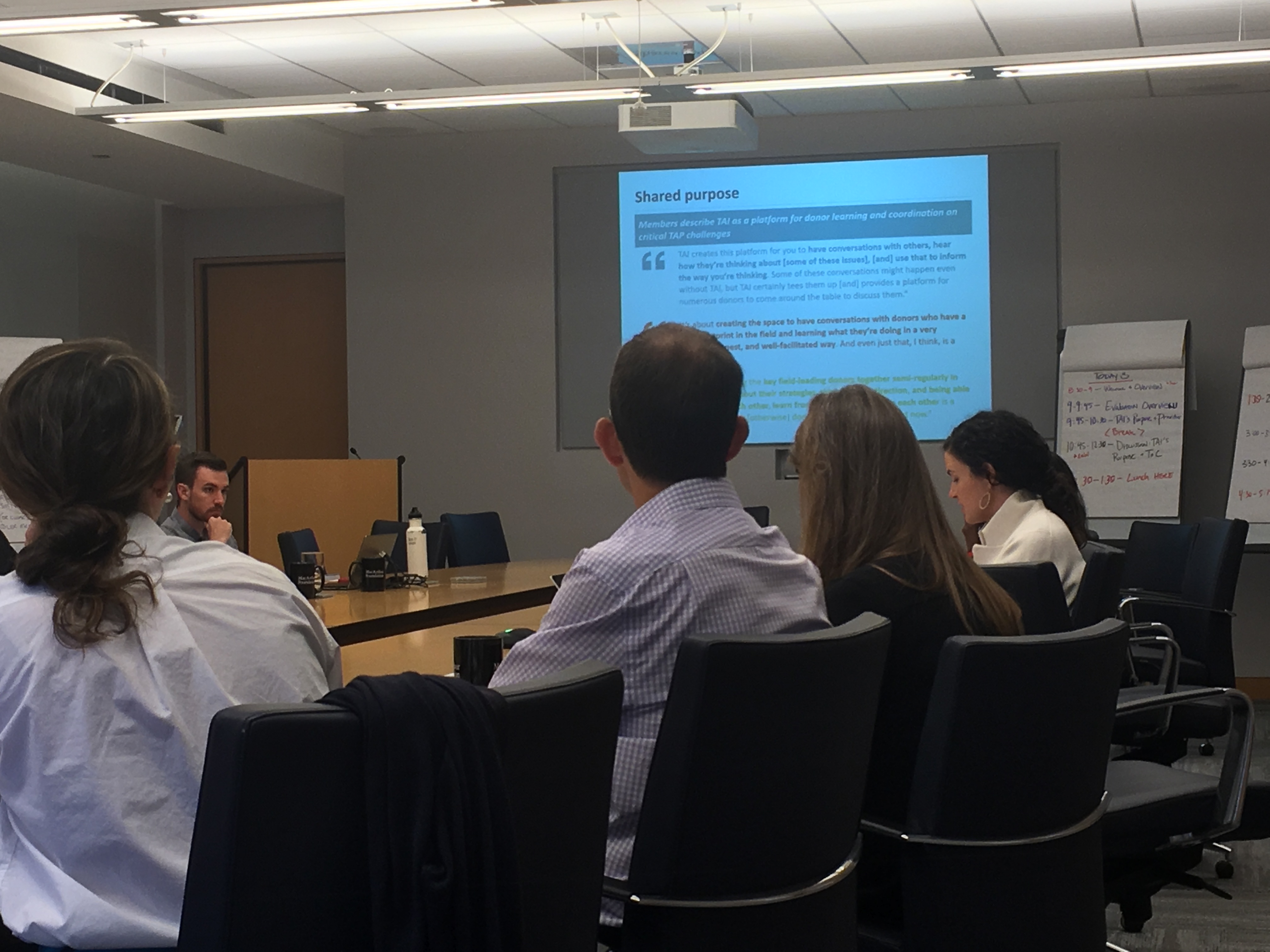In the final part of this blog series (read the first part and second part), our Monitoring and Evaluation Fellow, Mavra Zehra shifts her focus on TAI, analyzing the organisation’s atypical role in the Transparency, Accountability, and Participation (TAP ) field.

How does one gauge an organization’s influence? How does it play out in the context of donor-grantee relations? Such questions inspired my thinking for writing this blog series. The first blog explored grantees’ influence over their networks while the second blog looked at how grantees can influence funders. As I wrap up my role as a Monitoring Evaluation and Learning (MEL) Fellow at the Transparency and Accountability Initiative (TAI), I shift the focus on TAI itself in this final piece.
TAI shows up as any other grantee in the list of our members’ portfolios, but in practice we are atypical. Our mandate is to serve our donor members explicitly, including tracking relevant field developments. As a result, we end up playing a rather unusual intermediary role in the Transparency, Accountability, and Participation (TAP) field. 2020 marks ten years of TAI in operation, so it seems an opportune time to reflect and assess how TAI was able to influence the field/funders and what the future might hold.
TAI – the field influencer

In 2010, TAI was setup by a diverse group of eight leading funders and co-grantees in the TAP field. This first iteration of TAI was explicitly field-building with a focus on agenda-setting. Examples of successes in that role include:
- enabling the start-up of the Open Government Partnership (OGP) – TAI helped formulate the initial strategy and concept that underpins the initiative and members were early financiers of the effort.
- establishing the TALEARN network which brought together practitioners, funders, and researchers to improve learning in the TAP field.
- setting up the TABRIDGE network which connected TAP activists with the tech-savvy to improve the strategic use of tech for public goods.
TAI – The Donor Influencer

With a more established field, in 2016, TAI shifted to become a specifically donor space to learn and strategize. As a result, TAI concluded its field-servicing role and determined a donor-facing model to influence the members in their strategic thinking. A recent evaluation of TAI conducted by Arabella Advisors explored in detail the influence TAI has had on its donors. Many of the evaluation findings align with the suggested pathways listed in this earlier blog.
TAI members have also reported drawing from others’ practice to adapt to their own grant-making practices and inspire their thinking. Over half of the surveyed members indicated that another member has influenced their strategic approach or grant-making practices. This value addition is seconded by the relationships and connections TAI members have developed with other members. With its donor-serving strategy, TAI created an open environment which members have used to advance individual and collective work.
TAI – the grantee influencer
 Even with its donor serving model, the reach of TAI’s influence isn’t kept to members alone. TAI has managed to influence the member’s grantees directly and indirectly.
Even with its donor serving model, the reach of TAI’s influence isn’t kept to members alone. TAI has managed to influence the member’s grantees directly and indirectly.
Non-member donors and grantees have mentioned the value of TAI-commissioned reports and learning products, suggesting these products have spillover benefits for grantee strategizing and practice.
Grantees report additional value from TAI efforts to provide clarity on the state of the funding ecosystem, particularly on who is funding what. Additionally, on various occasions the TAI secretariat has been a thought-partner to grantees, providing feedback on their strategy documents, sitting on advisory committees, and hosting learning calls.
As TAI conversations turn increasingly not just to what to fund, but how to fund, there can also be influence on grantees. Efforts toward smarter grantmaking are designed to align support to grantee needs and reduce transaction costs. A notable mention here is TAI’s shared reporting pilot for co-grantees.
Where next?
TAI’s unique position also affords it a potential advocacy orientation. An area that TAI has not explicitly developed to date is the influence over non-member funders, big or small. However, new funders are approaching TAI for guidance and attesting to the value of having a platform like TAI to situate them to the field. The collaborative is in dialogue with public funders on fiscal programming design.
As TAI members develop the strategy for 2020 onwards, it will be interesting to see how this aspect of donor influence features.


